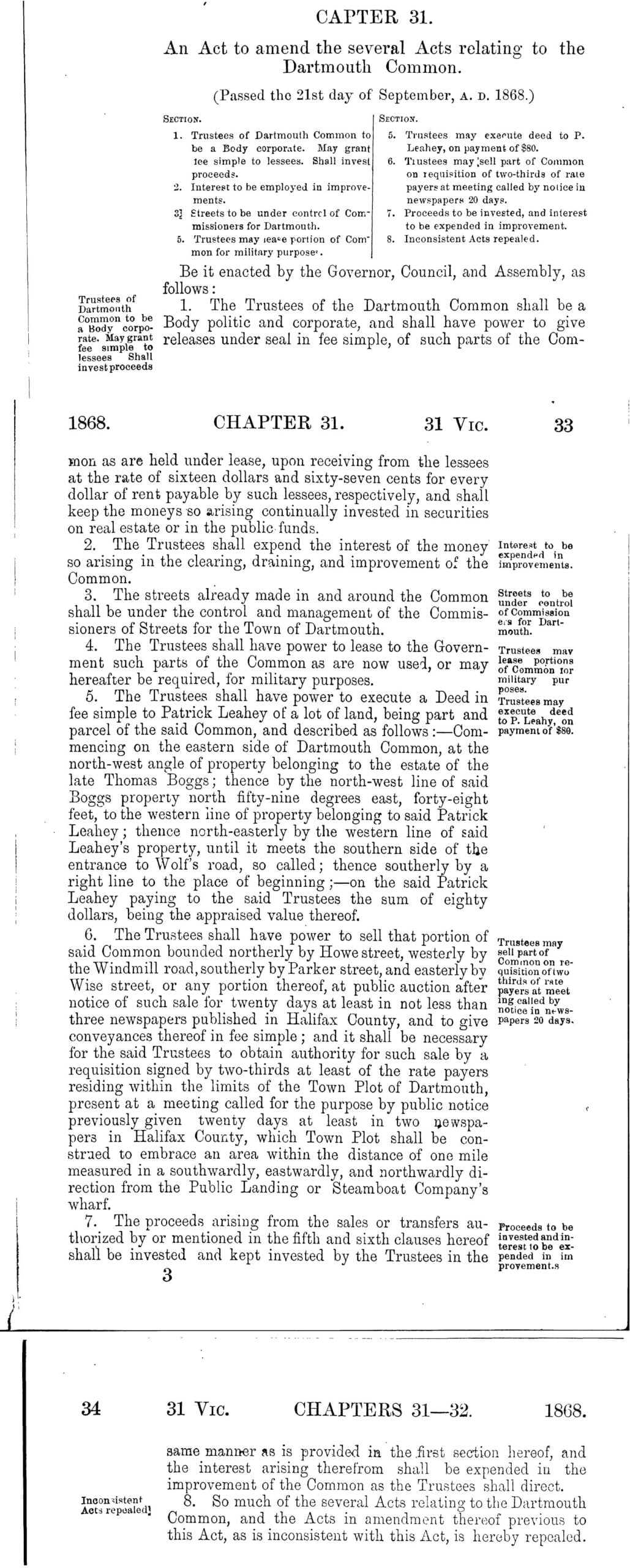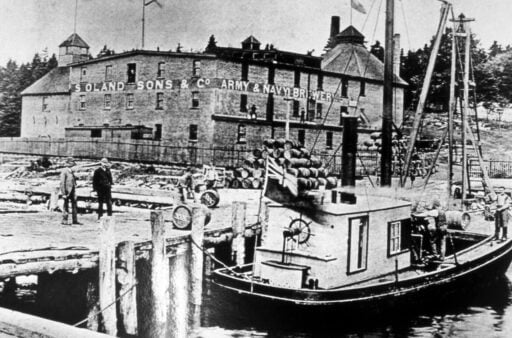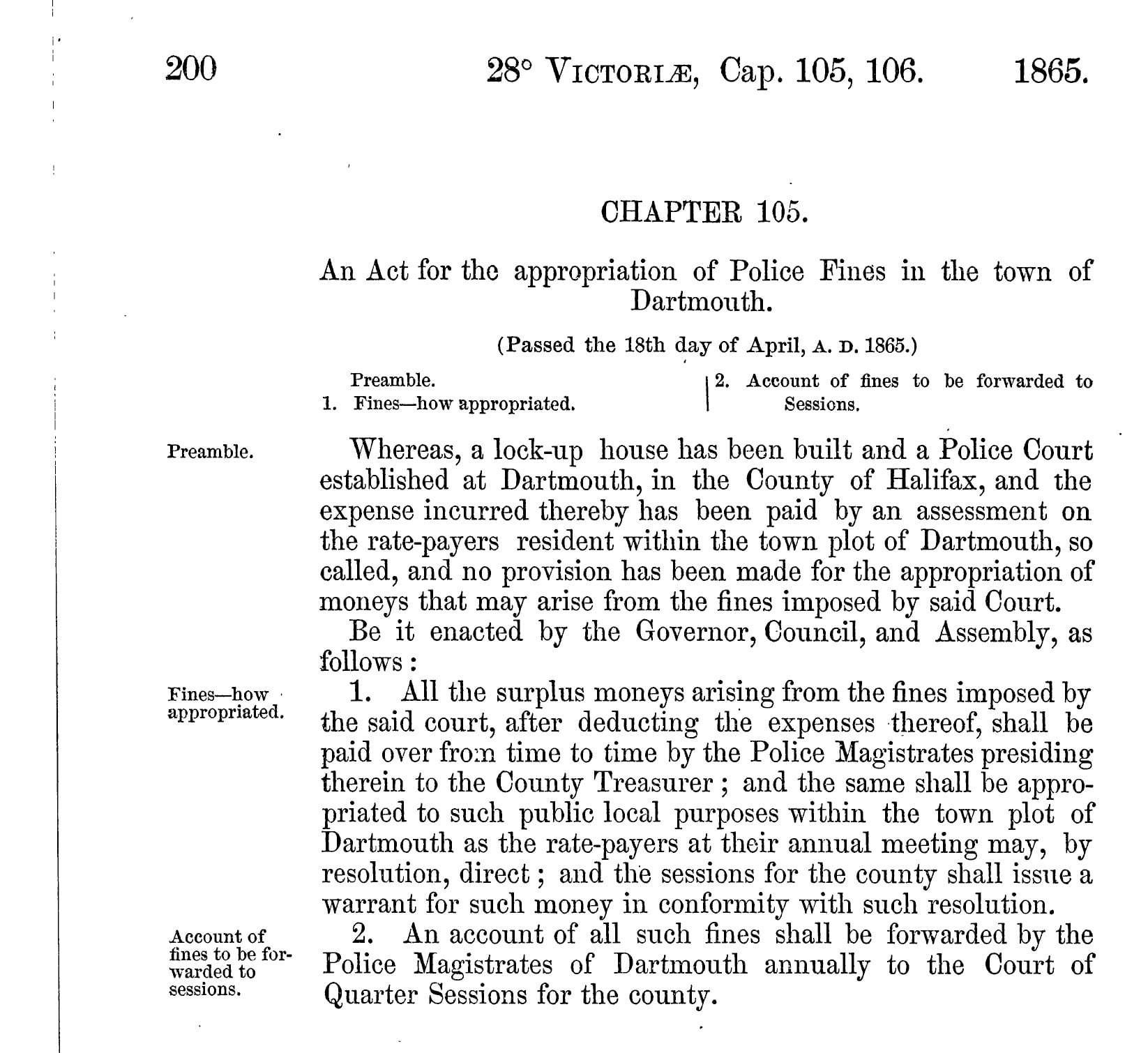From The Story of Dartmouth, by John P. Martin:
Up to 1886 the Dartmouth civic year closed on April 30th. From 1887 onward it was changed to coincide with the calendar year ending on December 31st, and the Town elections were held on the first Tuesday of February instead of the first Tuesday of May as heretofore. In the February election of 1887 the first woman ever to poll a vote in Nova Scotia, voted at the Ward II polling booth in the Town Hall. Unfortunately the name of the lady is not preserved in local records but the candidates for Councillor that day were A. C. Johnston and H. C. Walker.
The usual winter activities of Dartmouth centred around the lakes and the new skating rink. That season the Chebucto Club played a series of hockey matches with the Wanderers A.A.C., whose home rink was the Halifax Exhibition building on the present location of All Saints’ Cathedral. In February a grand carnival was held in the electrically lighted Dartmouth rink where some 200 skaters in unique and comic costumes attracted another 800 spectators. At Montreal, Jack Warner (who lived at the northeast corner of King and Church Streets) made quite an impression upon ice-racing enthusiasts. In a three-mile contest against Hugh McCormack of St. John, and speedy Frank Dowd of Montreal, Warner was in the lead when fouled by one of his opponents. The report of the Montreal Herald classed Jack Warner as “one of the foremost amateur skaters in Canada.”
The members of the Chebuctos, who for the past year had been grubbing out the rocks and scraggy growth of that portion of Dartmouth Common (now the Arrows’ baseball park), formally opened their grounds in June. The newly-levelled field was encircled with a quarter-mile cinder track and the whole area was surrounded with a high board fence. The home-plate for baseball was in the same position as now in use. West of that point about 50 yards, stood a small club-house. The entrance gates fronted Wyse Road almost in a direct line easterly from the present first base position.
The Chebuctos promoted baseball, lacrosse, cricket, quoits, tennis, football and field sports. This Club held the first road race hereabouts on a Wednesday afternoon in October when Louis A. McKenna won a six-mile contest from Dartmouth to Mrs. Walker’s at Salmon River House in Preston (now Merrick’s). H. D. Creighton was second. On the Saturday following, these two athletes entered among a large field of contestants in a 10-mile road race from the Willow Tree in Halifax to Bedford. Again McKenna won, with Creighton second. When they returned home that evening, both boys were welcomed by an enthusiastic and hurrahing crowd who paraded them in a carriage through Dartmouth streets in an impromptu torchlight procession, with speech-making at corners.
Our summer recreations favored the water. Over 1,000 people were ferried to Lawlor’s Island on a perfect August day where St. Peter’s picnic netted $700 in aid of their proposed new church. The Knockabout Club held their second annual regatta at the lake. The Halifax County Exhibition was held at the Rink in October. That autumn the Salvation Army commenced the erection of their Hall on Portland Street. The Starr Manufacturing Company were building cars for the railway near a siding at the Hamilton field. Harry Watt was foreman. John N. McElmon set up a steam-driven lumber mill at the foot of Canal Street. In this year also liquor licences were abolished, and open bars no longer existed.
There were two disastrous foundry fires in 1887. Mumford’s forge works on the present location of Lambert Mason’s plant was burned down causing a loss of $15,000. No insurance. In December a midnight blaze destroyed Symonds’ Foundry, and threw 35 hands out of employment. The loss was,estimated at $40,000.
The first school banks in Canada originated in Dartmouth that autumn largely through the suggestion and efforts of Town Clerk Elliot. From weekly deposits of one cent and upward, over $1,400 was saved by the scholars in the first year of trial. Later on other centres throughout the Dominion adopted this system.
Nathaniel Russell, ex-Magistrate and one of the prominent leaders in the public life of Dartmouth, died in August. Formerly a staunch supporter of Hon. J. W. Johnston, he later became a strong anti-Confederate. Mr. Russell was a pillar of Grace Methodist Church.
See also the Town of Dartmouth’s Annual Report for 1887:




